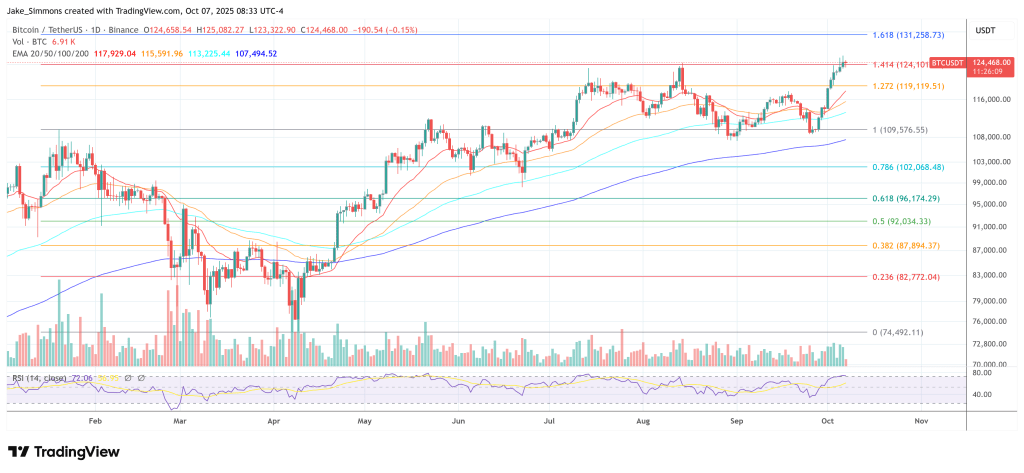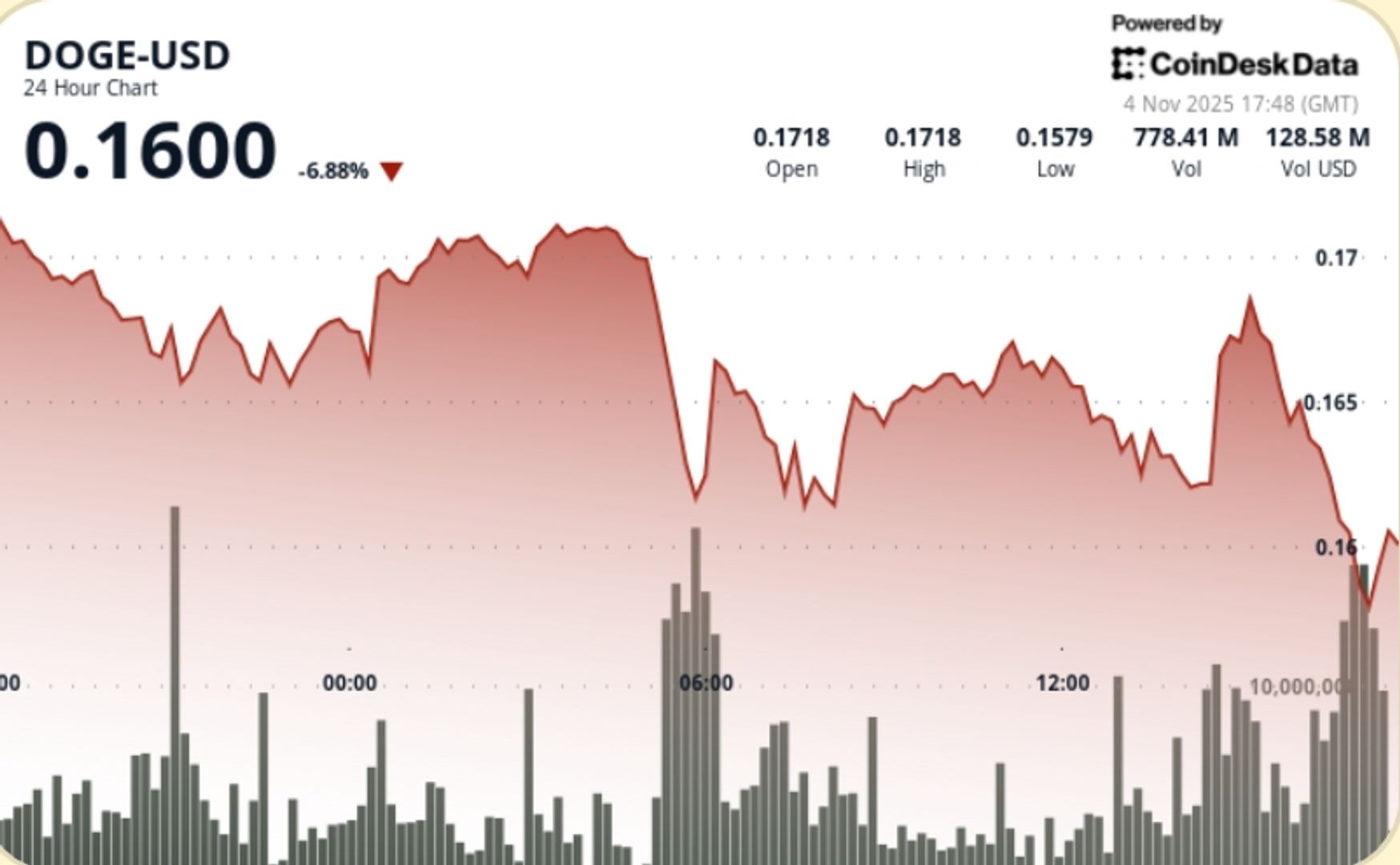Arthur Hayes believes Bitcoin can double into year-end—and he says the catalyst is a White House blueprint to capture the levers of US monetary policy. In an appearance on The Rollup, the BitMEX co-founder sketched a path to $250,000 per coin predicated on what he calls a “secret weapon”: a rapid consolidation of control over the Federal Reserve (Fed) that would clear the way for aggressive credit creation, yield-curve engineering, and an eventual flood of fiat liquidity into digital assets.
Trump’s Fed Plan Could Catapult Bitcoin To $250,000
Hayes’ $250,000 year-end Bitcoin call rests on a narrow but explosive thesis: Donald Trump can seize functional control of the Federal Reserve within months, trigger yield-curve control by executive-pressure and personnel power, and unleash a credit impulse that spills straight into crypto via stablecoins. The BitMEX co-founder framed the pathway not as conjecture but as institutional mechanics. “It just is math. I love math,” he said.
At the center is the Fed’s architecture—two bodies, two vote thresholds, one choke point. Hayes recited the plumbing crisply. “There’s a Fed Board of Governors. There’s seven members on this board. All are presidential appointees confirmed by the Senate and simple majority wins. So you need four votes out of seven to control that board.”
With that majority, the White House gains three levers at once: the interest rate paid on reserve balances and terms at the discount window; supervisory stance over bank regulation; and decisive influence over who runs the 12 regional Reserve Banks—because those presidents must be approved by the governors.
The second body, the FOMC, has 12 votes; seven governors and five district presidents. Stack sympathetic leaders at the districts and the tally follows. “By having four in the governors and seven of the FOMC you’re effectively controlling the central bank,” Hayes argued.
Why, then, is Governor Lisa Cook “the final domino”? Hayes ties the timing to Stephen Miran’s recent dissent on rate policy among sitting governors. He contends Trump already has two aligned votes and a plausible third; Cook is the hinge for a fourth.
In his formulation, mounting legal and political pressure could force her departure on a compressed calendar. “I think it’s before the end of the year,” he said, describing an “imminent” court determination related to a mortgage- or bank-fraud matter and the likelihood of a negotiated exit irrespective of guilt or innocence:
“This is all politics… what is she going to get promised in the back end to step down and exit stage left?” If Cook leaves and a replacement sails through while the Senate math still favors confirmations, the Board majority flips. With four of seven, the administration can then approve or block district-president selections coming up on the two- and four-year rotation—“in every year that ended in a one and a five… all 12 district bank presidents are up for reelection,” he noted—giving a path to seven of 12 on the FOMC.
Yield Curve Control And Liquidity
The policy intent is explicit: steepen the curve and run the economy hot via regional banks—what Hayes calls “QE for poor people.” The operational tools start on the short end. A governor-aligned Board can cut the rate paid on excess reserves to pull down front-end benchmarks, cheapen funding for banks, and reopen the discount window with friendlier terms.
Supervision can be eased to encourage loan growth outside the money-center complex. In parallel, an FOMC majority can direct the System Open Market Account to expand—classic balance-sheet policy—while rhetorically committing to pins on the curve. The template, Hayes says, is the 1940s.
“A politician can declare exigent circumstances… there are so many things that [they] could use as an excuse… and therefore the Fed is justified in combining with the Treasury and fixing the money supply.”
The effect is curve management, not just cuts: “They’re going to steepen the yield curve. And so steepening the yield curve is going to bring the near end down,” while longer maturities reprice around higher nominal growth and inflation expectations. Even if long rates fall from peak levels as policy eases, the slope widens, repairing bank net-interest margins and pushing credit creation into the “heart of America.”
This is the bridge to Bitcoin. A steepened curve and looser supervision channel new lending through regional banks, raising the money multiplier and nominal GDP, and pushing inflation. “When the regional bank is lending… they’re creating this new loan… they need to hire more workers… and obviously inflation grows along with it,” Hayes said.
Liquidity then leaks into Bitcoin through stablecoins he expects to proliferate under a dollar-hegemony strategy. First comes T-bill carry in tokenized dollars; next comes on-chain yield; finally comes speculation. “Once you have a stablecoin… now you’ve got a dollar bank account… I can make 10–15%… I’m still broke… I’m going to speculate,” he said, pointing to perpetuals venues as the ultimate release valve for global retail leverage.
The price call follows from the plumbing. Hayes reiterated a “double into the end of the year” toward $250,000 if the personnel puzzle clicks—Cook exits, replacements are confirmed, district appointments swing, and the Fed’s balance sheet plus short-end levers are brought to heel.
He also flagged the political clock: razor-thin Senate margins and the risk that a post-2026 Congress could block confirmations. “If Trump has anyone who needs to be approved… it better happen before then,” he warned, adding that Powell’s chair term ending in May 2026 could compound the realignment if the earlier pieces are in place.
Hayes’ macro coda is stark: the debt arithmetic forces either inflation or explicit restructuring, and both are bullish for scarce assets. He even entertained revaluing US gold to book a trillion-dollar gain—an admission of dollar devaluation that he said would carry unknowable Treasury-market consequences. Either route, he insists, is hostile to bonds and supportive of Bitcoin. “At the end of the day, you don’t want to own bonds… you want to be selling dollars and owning a hard asset like Bitcoin or gold.”
At press time, BTC traded at $124.468.


 1 month ago
7303
1 month ago
7303















 English (US)
English (US)